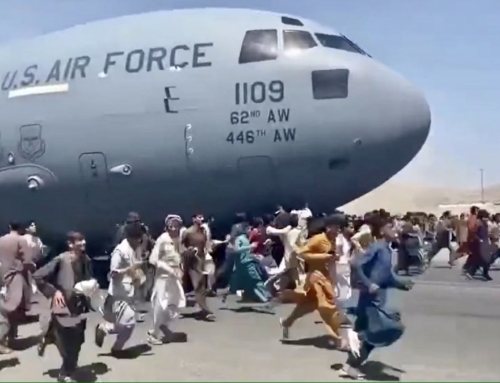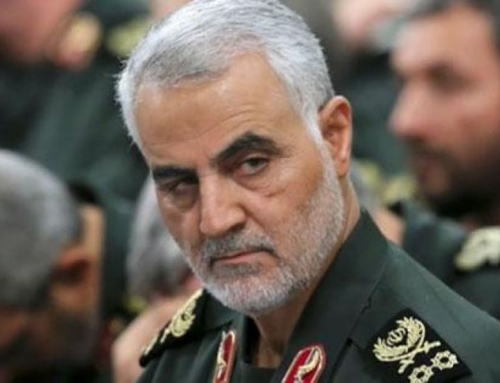
Discussion continues about a no-fly zone in Ukraine.
The discussion of a no fly zone has been debated for weeks, and I’ve answered many questions from neighbors, friends, readers at book events and folks on social media, and at the end of the day, each question was based on a misconception of what a no fly zone is, how it’s achieved, and what it can accomplish. A myriad of articles have been written about the mission set, but most are overly long or overly complex, and I figured I’d attempt to clean up the debate a little. So, here you go:
The original granddaddy of no-fly zones occurred after the first Gulf War, otherwise known as Desert Storm in 1991. After we’d chased Saddam Hussein back to Baghdad, there was a Shia and Kurd uprising in Iraq. Saddam quelled the uprising with unrelenting aerial bombardments, including the use of chemical munitions. We weren’t going to invade Iraq proper to stop the barrage, but something had to be done to prevent the slaughter of innocent people. Operation Provide Comfort and Southern Watch was born, meaning that between certain geographic parallels in the north and south of Iraq, no planes would be allowed to fly. Since neither the Shia nor the Kurds had any aircraft, what we really meant was that none of Saddam’s attack aircraft could enter the space to harm the population.
It was a resounding success, so much so that the American public forgot it was continually being executed. Most don’t realize it, but those no-fly zones existed from the end of the first gulf war to the beginning of the second, in 2003. Through it all, we didn’t lose a single aircraft, and the cost was relatively cheap.
Because of that success, the no-fly zone became a thing. Since then, we’ve used it multiple times to greater or lesser effect, in Bosnia, Kosovo, and Libya, to name a few, begging the question, “Why can’t we use it in Ukraine? Surely that is a strategy we can deploy to aid the civilians getting pummeled in Ukraine?”
Not really. And here are the three reasons why:
- A no-fly zone automatically implies air supremacy, not air superiority, meaning our patrolling aircraft can fly through the area as easily as a Delta Jet flying from Atlanta to California. This means the US and our allies must first eliminate ALL threats to our dominance, both in the air and on the ground. There’s a misguided notion that a no-fly zone entails NATO aircraft entering the airspace and flexing their muscles, end of threat, but that’s not the case. Before we even begin patrolling, all threats will have to be eliminated through a SEAD campaign – the Suppression of Enemy Air Defenses. In Iraq, we blew up all radar- and surface-to-air threats prior to starting our patrols, and we continued to attack those sites for the duration of the operation. Iraq was a second-tier SAM threat, Russia is not. NATO will be up against a first-world capability, and it will be forced to annihilate all threats to its aircraft. This includes the S400 and S300 weapon systems – which are positioned on Belarusian and Russian soil, but can reach in-depth throughout Ukraine. Let me be clear here: We will have to attack anti-aircraft systems in Russia and Belarus to protect NATO’s aircraft in Ukraine, which will be an act of war. In addition, since Ukraine has a healthy air defense system of its own, NATO will have to parse the radar painting it gets as either friend or foe, and quite possibly run the risk of getting shot at by the very people we’re trying to protect. In Iraq, the Kurds and Shia had no ADA capability. If something had triggered our systems, it was most definitely from Saddam, inviting annihilation, but in Ukraine that is not the situation. Worst case, we end up with one (or many) friendly fire incidents.
- The no-fly zone is total. The Kurds, Bosnians, Libyans and Kosovars had no aircraft to compete with the forces attacking them, and thus the effort was lopsided in our favor. That is not the case in Ukraine. It still has an air force, and is using it to great effect. If we conduct a no-fly zone, that force is off the table. As NATO will be ostensibly neutral and conducting the operation to protect Ukrainian civilians, it can’t conduct a “Russian only” no-fly zone. We can’t allow Ukrainian aircraft to conduct strikes under NATO’s protective umbrella, because we’ll basically be entering the war on Ukraine’s side. Russia most certainly isn’t going to stand by while we shoot down all Russian aircraft, while letting Ukrainian planes continue to strike—especially if NATO has neutralized Russian forces’ ability to protect themselves from the attacks. I’m sure President Zelenskyy would love that, and I don’t blame him, but it’s not in the cards. Since its “just” a no-fly zone, meaning we won’t use our airpower to attack ground formations not involved in air defense, meaning we aren’t going to be perceived as attempting to alter the balance of power, it might be better to let the Ukrainian air force fly. At the end of the day, we might actually be helping the Russian ground forces to maneuver because we restrict the ability of the Ukrainian Air Force to strike them.
- The no-fly zone in Iraq was successful because the majority of attacks were precision aerial strikes. Once we took away Saddam’s ability to fly, we took away his ability to strike. This will not be the case in Ukraine. The majority of strikes against civilians in Ukraine are conducted via ground-based rockets, artillery, missiles and mortars, and a no-fly zone will do nothing to prevent those attacks. This problem set reared its ugly head in Bosnia. The greatest massacre of the war—Srebrenica, where over 8,000 Bosniaks were systematically slaughtered—occurred under the mighty protection of our no fly zone. Right now, the Russian air force hasn’t really factored into the attacks—so much so that there are a plethora of articles written asking why Russia isn’t using its aerial strike capability. In fact, some analysis has shown that even when it does use its capabilities, the Russian aircraft let their missiles loose while still inside the territory of Russia or Belarus due to the SAM threat from Ukraine. How are we going to prevent that? Chase the aircraft across the Russian border and shoot it over Moscow? If the enemy isn’t relying on the very zone we establish to conduct its attacks, be it from the air or the ground, it serves no purpose, as the people in Srebrenica learned. And that, at the end of the day, is where we are in Ukraine.
I completely understand why President Zelenskyy wants a no fly zone. He understands everything above and realizes if we agree to it, the United States and all of NATO will be in the fight. I don’t fault him for that, he’s in an untenable situation. He doesn’t care if the war spreads outside of the confines of Ukraine, he’s rightly trying to save his homeland. He’s in the fight right now, and he knows that the only way he’s going to survive is by dragging in NATO. The United States, as the leader of NATO, should look at the problem set on its merits with clear eyes. Barking US politicians looking for points with no skin in the game shouldn’t matter. Only one thing matters: Does a no-fly zone make sense. And no, it doesn’t. A no-fly zone will do very little to protect the civilians of Ukraine, but might do everything to get us into World War III.










The idea of a no fly zone seems nonsensical to me. A plane flies but it’s what might fly from the plane that’s the real danger. So in some magical no fly zone maybe planes can’t fly. A plane is just a mobile sky platform for launching other flying things that destroy stuff. In this scenario, you can still have platforms outside the no fly zone that launch flying things that destroy stuff, in the air or on land. Or you could have platforms inside the no fly zone that launch flying destructive stuff, on the ground, mobile or stationary. Hey, a gun does that. And plenty of other stuff. And I’m sure air platforms with short flights would work too, like drones and such.
Basically, ground supremacy is required for actual security and victory. Which is then usually how countries form.
One addition, to be deeper. Ideas also fly through the air. Whatever you do, land or sky, the biggest danger is what people continue to think and say. So really the biggest no fly zones are all the communication channels, from education to entertainment.